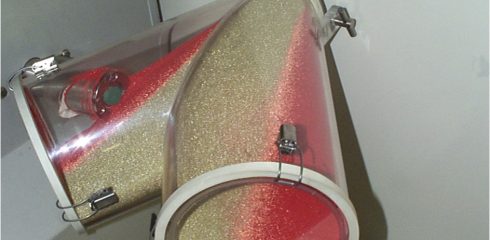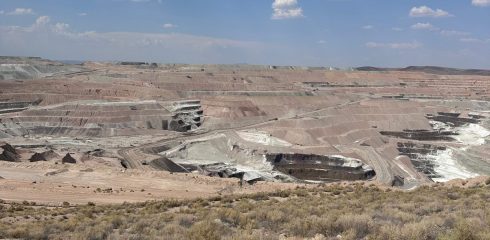
Recently there was a sad and sobering story on the news: three girls died after they were buried in canola seed while playing on a grain truck at their family farm in Alberta. One girl was 13 and her twin sisters were 11.
Several years ago a friend of mine, an avid collector of buried treasures, was exploring in a 4 ft deep trench when suddenly its walls collapsed. Fortunately there were bystanders nearby who saw what happened and rushed to rescue him. Realizing how close he came to being trapped and possibly suffocating to death, he’s now much more careful as to where he goes, and he never goes into a trench unless someone is stationed nearby.
Both of these events reinforce something that most of us know but bears repeating: bulk solids have the dangerous propensity to move at times without warning. Collapsing arches, ratholes, or the sides of a sloping surface all have the potential to bury an unsuspecting person who happens to be at the wrong place at the wrong time.
You also need to remember that it’s not necessary to become completely buried before you are unable to breathe. If your chest is immersed such that it can’t expand and contract, you will suffocate. Therefore it’s important to not panic if you ever become entrapped, since the material surrounding you will likely pack even tighter. Shield you face and chest with your arms and clothing to create space to breathe.
OSHA provides important information concerning grain storage facilities, much of which applies to other industries as well:
The grain handling industry is a high hazard industry where workers can be exposed to numerous serious and life threatening hazards. These hazards include: fires and explosions from grain dust accumulation, suffocation from engulfment and entrapment in grain bins, falls from heights and crushing injuries and amputations from grain handling equipment.
Suffocation is a leading cause of death in grain storage bins. In 2010, 51 workers were engulfed by grain stored in bins, and 26 died-the highest number on record.
Grain dust explosions are often severe, involving loss of life and substantial property damage. Over the last 35 years, there have been over 500 explosions in grain handling facilities across the United States, which have killed more than 180 people and injured more than 675.
OSHA Standard 1910.272 “Grain Handling Facilities” subsection (g) addresses entry into grain storage structures.
- 1910.272(g)(1)(iv) “Walking down grain” and similar practices where an employee walks on grain to make it flow within or out from a grain storage structure, or where an employee is on moving grain, are prohibited.
- 1910.272(g)(2) Whenever an employee enters a grain storage structure from a level at or above the level of the stored grain or grain products, or whenever an employee walks or stands on or in stored grain of a depth which poses an engulfment hazard, the employer shall equip the employee with a body harness with lifeline, or a boatswain’s chair that meets the requirements of subpart D of this part. The lifeline shall be so positioned, and of sufficient length, to prevent the employee from sinking further than waist-deep in the grain. Exception: Where the employer can demonstrate that the protection required by this paragraph is not feasible or creates a greater hazard, the employer shall provide an alternative means of protection which is demonstrated to prevent the employee from sinking further than waist-deep in the grain.
Many workplaces contain areas that OSHA considers “confined spaces” because, while they are not necessarily designed for people, they are large enough for workers to enter and perform certain jobs. A confined space also has limited or restricted means for entry or exit and is not designed for continuous occupancy. Confined spaces include, but are not limited to, tanks, vessels, silos, storage bins, hoppers, vaults, pits, manholes, tunnels, equipment housings, ductwork, pipelines, etc.
OSHA uses the term “permit-required confined space” (permit space) to describe a confined space that has one or more of the following characteristics: contains or has the potential to contain a hazardous atmosphere; contains material that has the potential to engulf an entrant; and has walls that converge inward or floors that slope downward and taper into a smaller area which could trap or asphyxiate an entrant.
In addition to equipping each employee who enters a permit-required confined space with a body harness with lifeline or a boatswain’s chair, OSHA requires an observer, equipped to provide assistance, be stationed outside the bin, silo, or tank being entered. Communications (visual, voice, or signal line) must be maintained between the observer and employee entering the bin, silo, or tank.
Some other useful tips concerning working in or around silos:
- Don’t enter any bulk solids storage vessel unless you must. Instead, do the job from outside whenever possible.
- Plan your escape, and always have a person watch from the outside. The watcher should have clear instructions as to what to do in case of an emergency. The first instruction should be, “Don’t follow me in.”
- If only one person is on standby and can’t pull you out without entering, he/she must call for help. Only after a rescuer arrives should someone enter, but he/she must wear a breathing apparatus and a lifeline. One or more people outside can help pull you out.
- Keep everyone well clear when filling or discharging a bin or silo.
- Children should never enter silos or feed bins.





